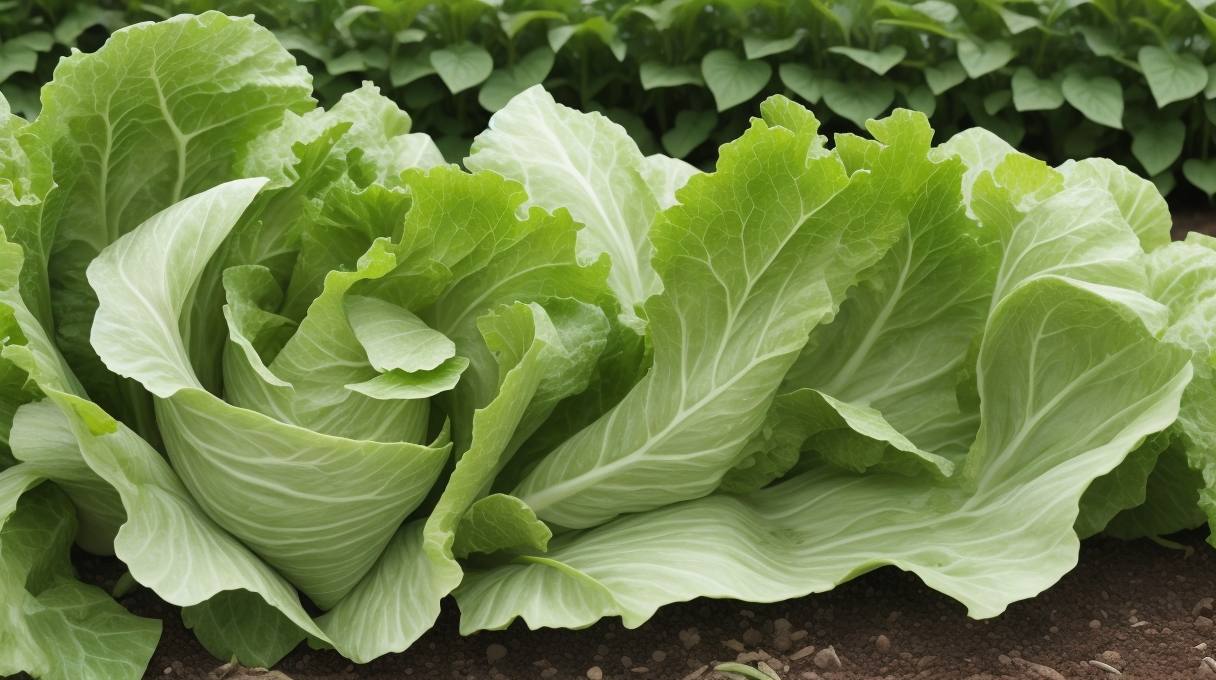· gardening tips · 4 min read
How to Prevent Bolting in Iceberg Lettuce: Essential Tips for Gardeners
Stop bolting in its tracks with our essential guide for iceberg lettuce! Learn the signs, causes, and expert strategies to keep your lettuce tender and bolt-free. A must-read for gardeners aiming for a perfect, prolonged harvest. Say goodbye to bolting today!

Iceberg lettuce is a popular and versatile vegetable that can be enjoyed in salads, sandwiches, and wraps. However, one common issue that gardeners and home growers face with iceberg lettuce is bolting. But what exactly does it mean for iceberg lettuce to bolt? Bolting refers to the process where the lettuce plant starts rapidly growing its flower stalks instead of producing more leaves. This usually happens when the weather gets too warm or when there are sudden fluctuations in temperature. In this article, we will explore effective methods to prevent bolting iceberg lettuce so you can enjoy fresh and crisp leaves all season long.
One way to prevent bolting in iceberg lettuce is by ensuring proper timing during planting. Iceberg lettuce prefers cooler temperatures, so it’s best to sow the seeds in early spring or late summer/early fall when the weather is milder. Additionally, providing adequate shade for your plants can help regulate their temperature and reduce the chances of bolting. Another important factor to consider is regular watering - keeping the soil consistently moist helps keep the plants cool and prevents stress-induced flowering. By implementing these preventative measures, you can successfully grow delicious non-bolted iceberg lettuce right at home!
Why Iceberg Lettuce Bolts
Iceberg lettuce is a popular choice for salads and sandwiches due to its crisp texture and mild flavor. However, it has a tendency to bolt, which can negatively impact the quality of the lettuce leaves. Here are some reasons why iceberg lettuce bolts:
- Temperature: High temperatures trigger bolting in iceberg lettuce. When exposed to prolonged heat, the plant shifts its focus from leaf production to producing flowers and seeds.
- Daylight hours: The length of daylight also affects bolting in iceberg lettuce. As days become longer during spring or early summer, the plant perceives this as a signal that it’s time to reproduce.
- Age: Older plants are more prone to bolting than younger ones. Once an iceberg lettuce plant reaches maturity, it becomes more likely to initiate flowering.
- Stress: Stress factors such as drought or nutrient deficiencies can induce bolting in iceberg lettuce plants as they perceive these conditions as threats to their survival.
- Genetics: Certain varieties of iceberg lettuce have genetic traits that make them more susceptible or resistant to bolting.
To prevent or minimize bolting in your iceberg lettuce crop, consider implementing these strategies:
- Choose bolt-resistant cultivars: Opt for varieties specifically bred for their resistance against premature bolting.
- Plant at the right time: Start planting your seedlings when temperatures are cooler and daylight hours are shorter.
- Provide shade: Shielding your plants from excessive sunlight using shade cloth or row covers can help mitigate high temperatures.
- Adequate watering: Ensure consistent soil moisture by watering regularly but avoid overwatering.
- Nutrient management: Maintain balanced soil fertility with proper fertilization practices tailored for optimal growth conditions.
Understanding why iceberg lettuce bolts allows you to take preventive measures and prolong the harvestable period of this versatile vegetable variety. By managing temperature, daylight exposure, stressors, and selecting appropriate lettuce cultivars, you can enjoy fresher and longer-lasting iceberg lettuce.
Conclusion
In conclusion, preventing bolting in iceberg lettuce is crucial for maintaining its quality and prolonging its shelf life. By understanding the causes of bolting and implementing preventive measures, growers can ensure a steady supply of fresh and crisp lettuce.
To prevent bolting, it is important to select suitable varieties that are less prone to premature flowering. Providing optimal growing conditions such as consistent moisture levels, proper spacing, and adequate nutrition will also help minimize the risk of bolting. Additionally, regular monitoring of environmental factors like temperature fluctuations and light exposure can further aid in preventing this undesirable phenomenon.
By taking proactive steps to prevent bolting in iceberg lettuce, farmers can protect their crops from premature flowering and maintain high-quality produce for consumers. This not only benefits the growers economically but also ensures that consumers have access to fresh and nutritious lettuce throughout the year.